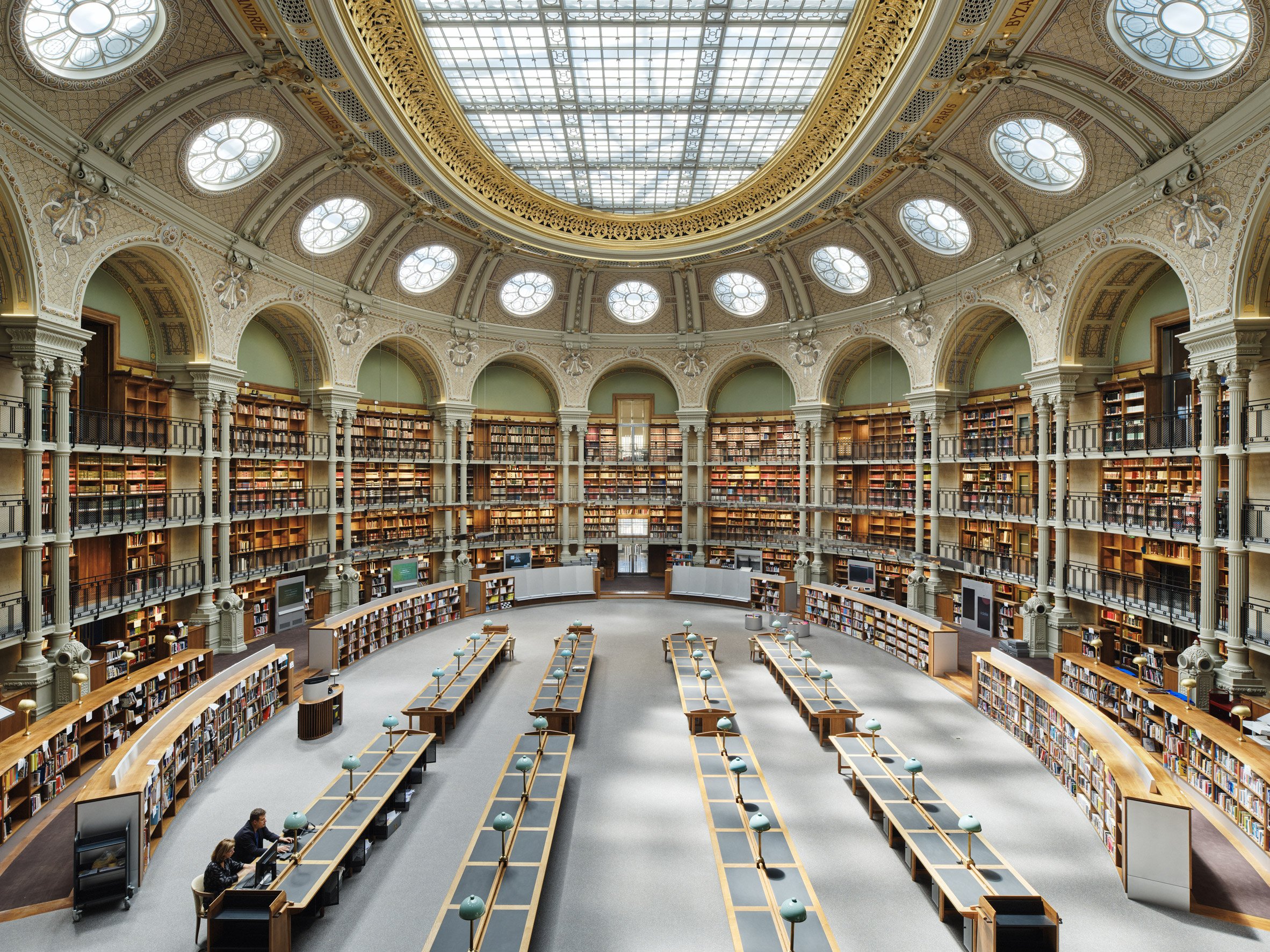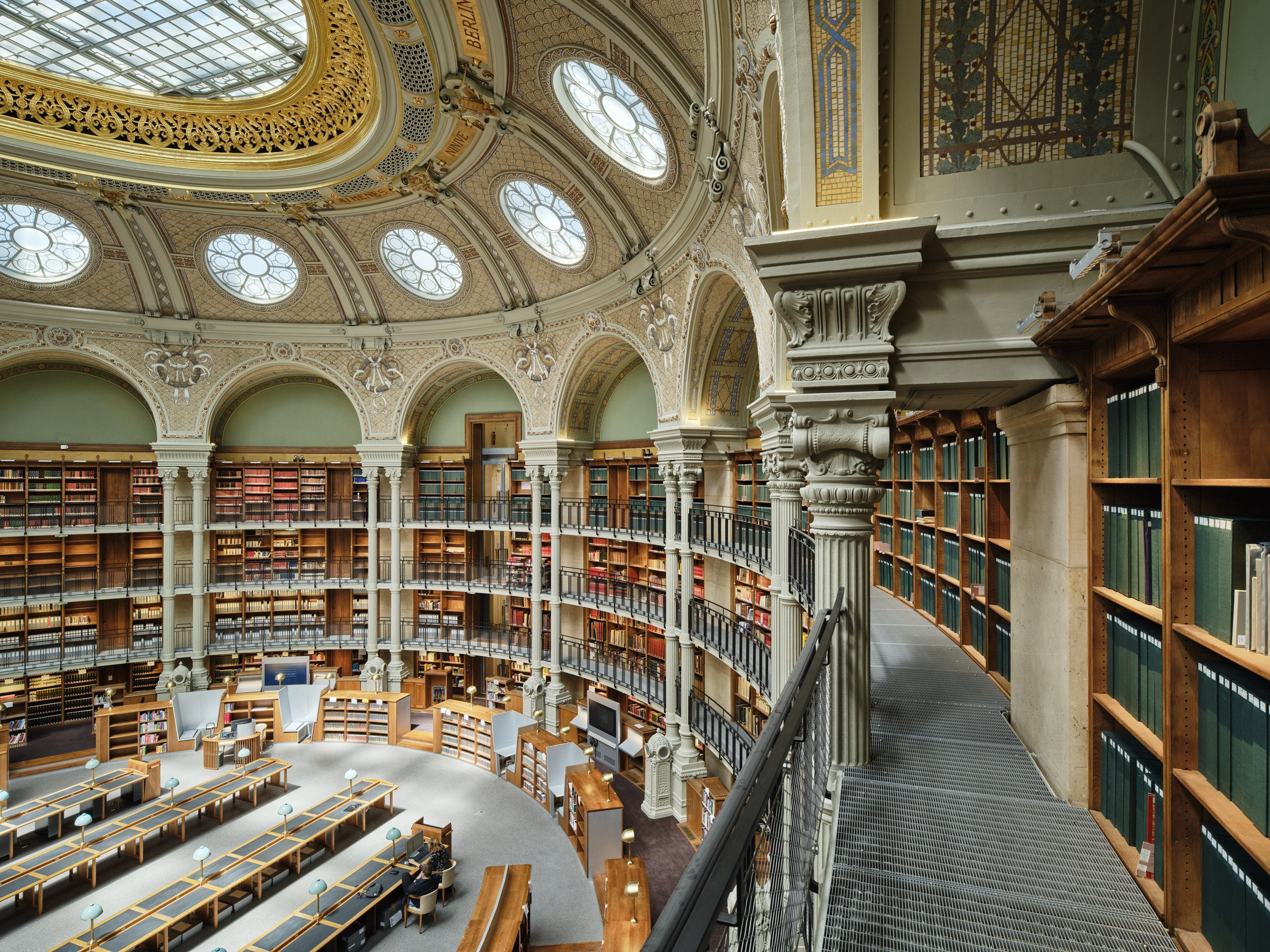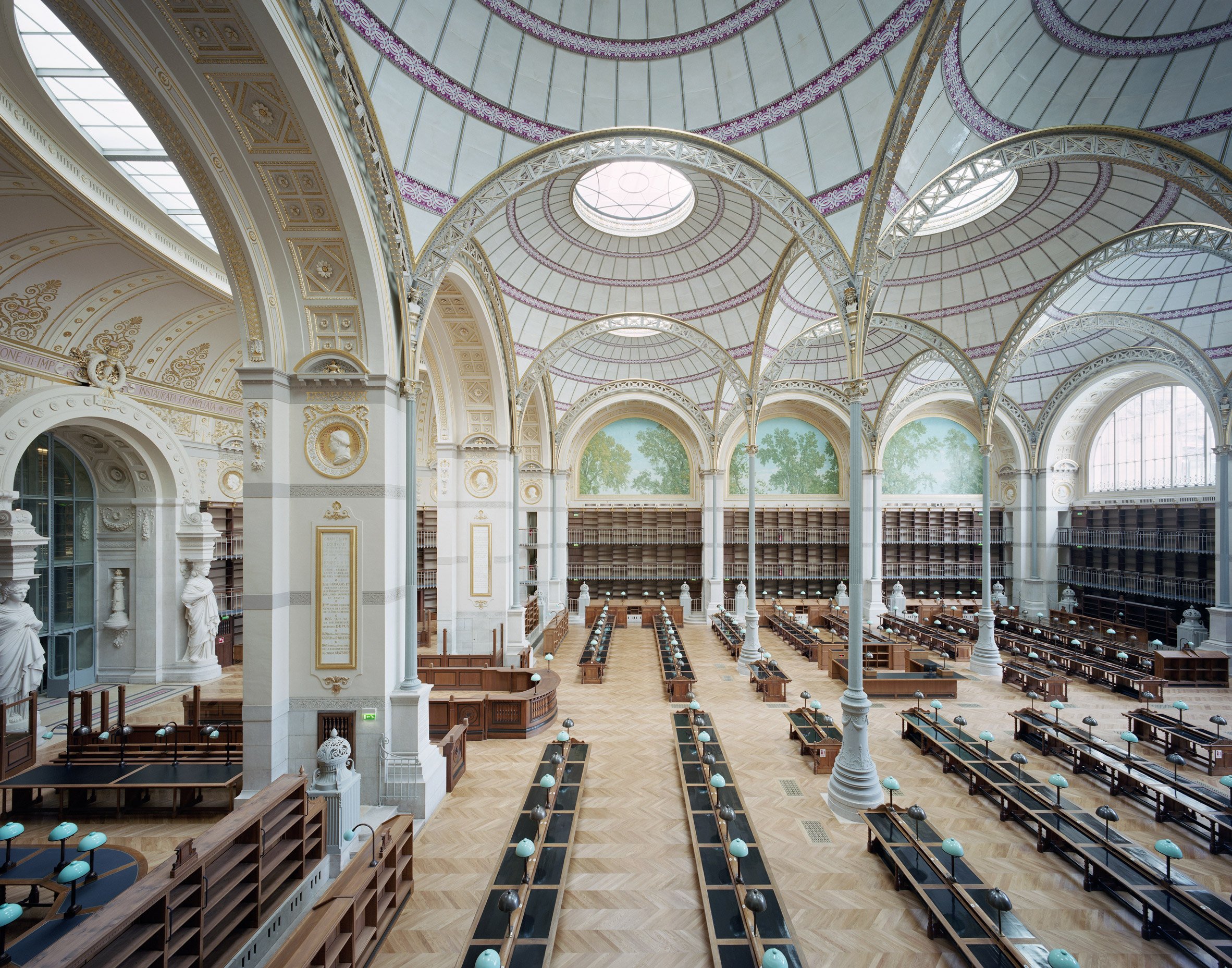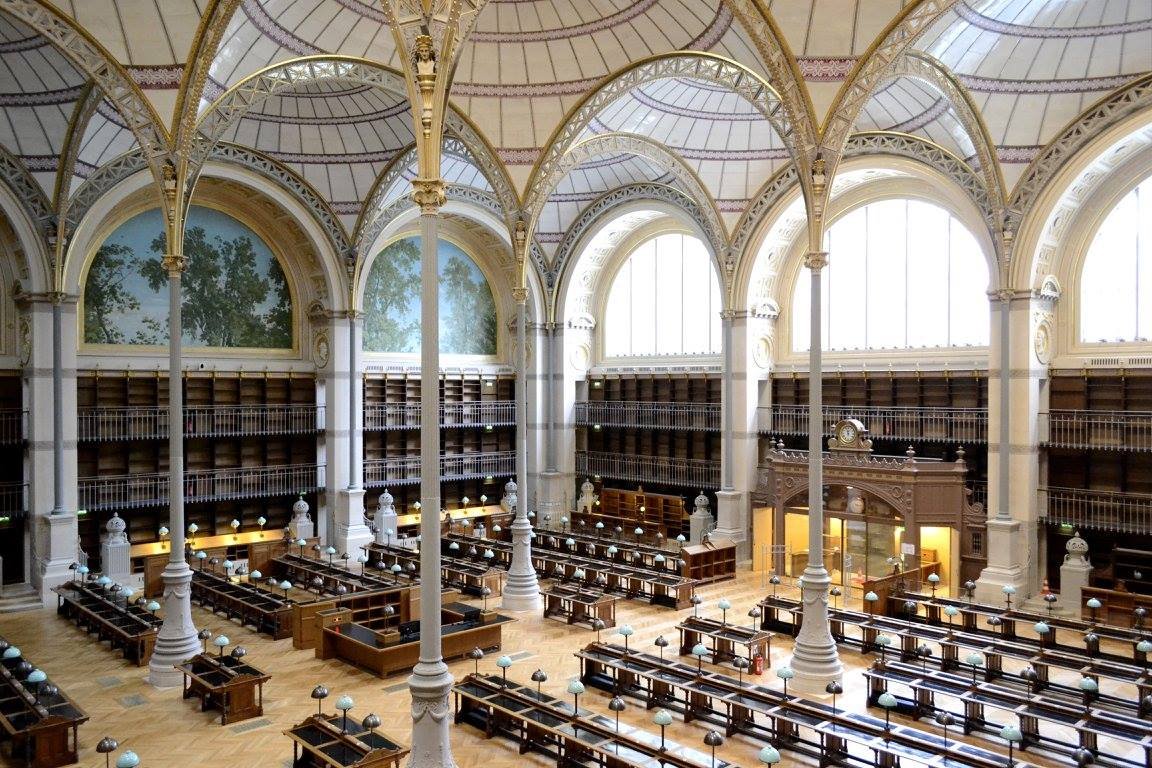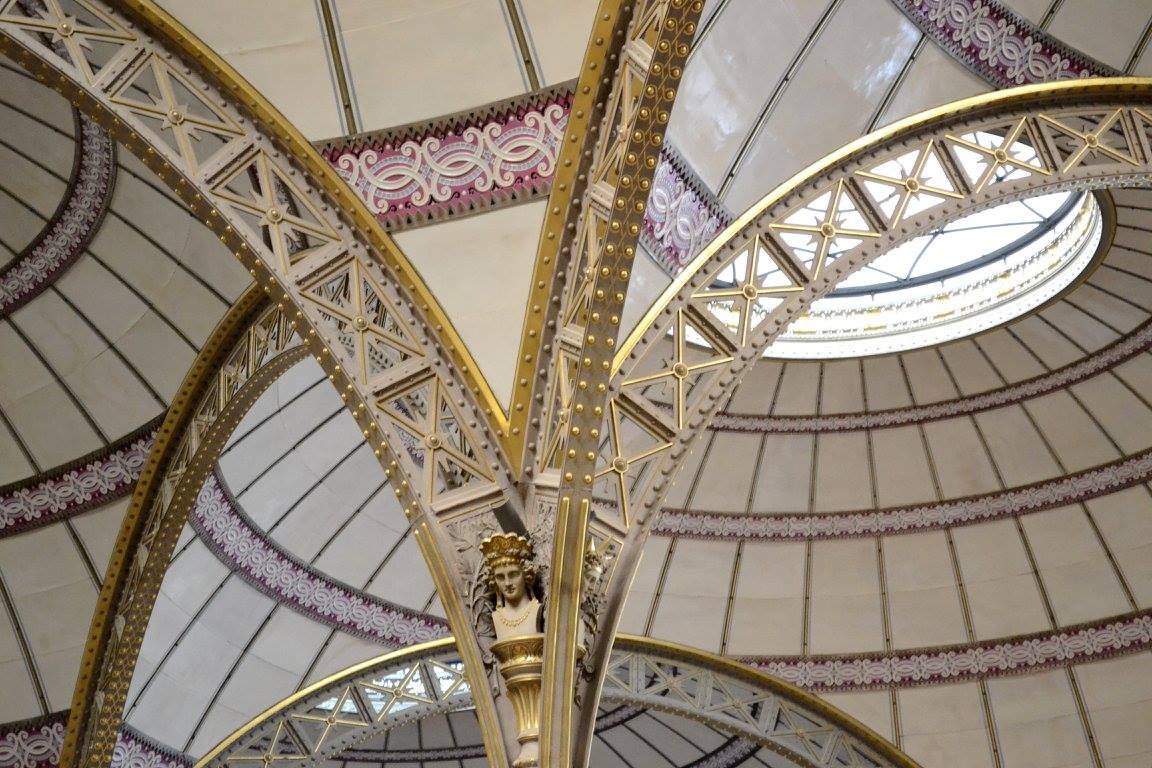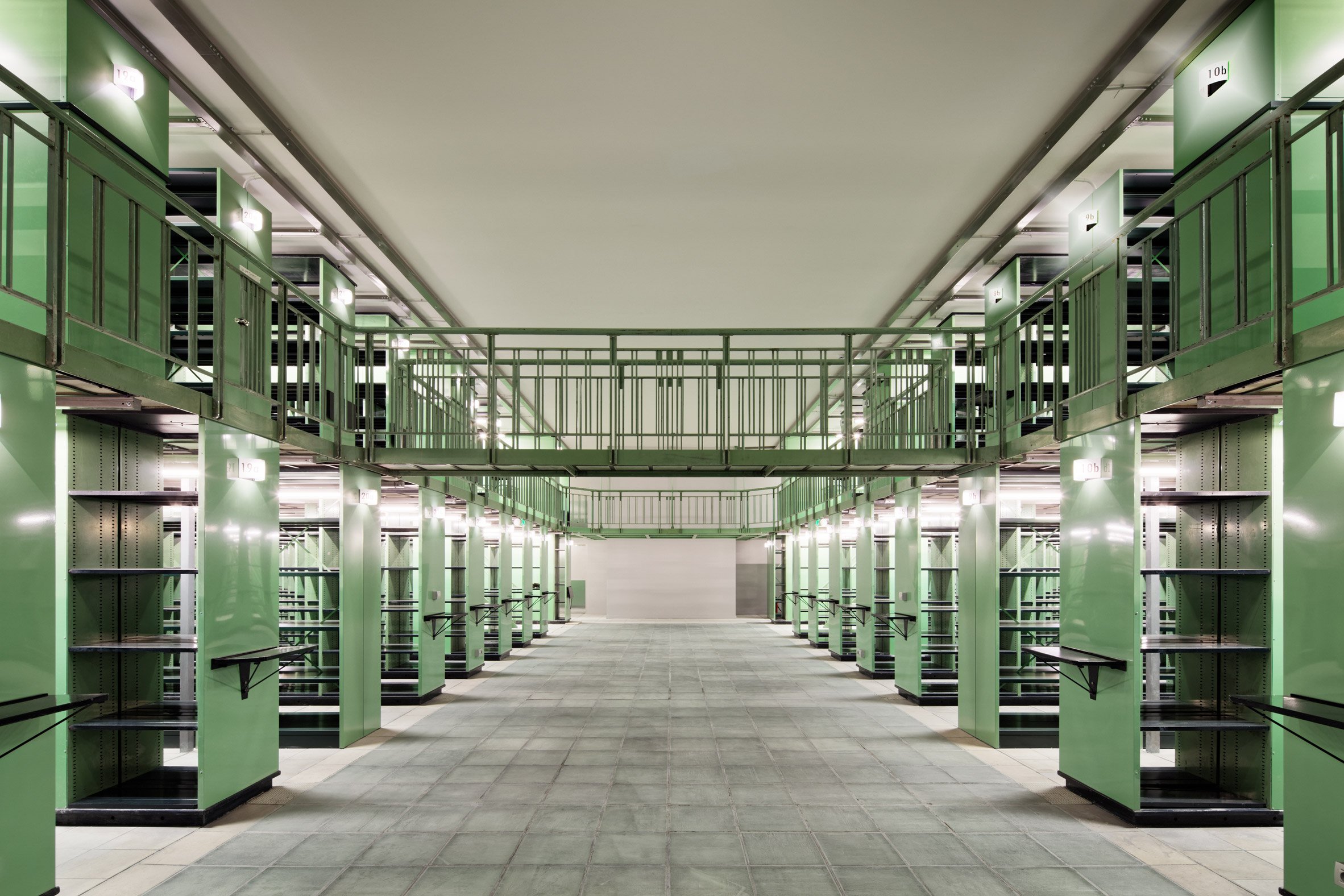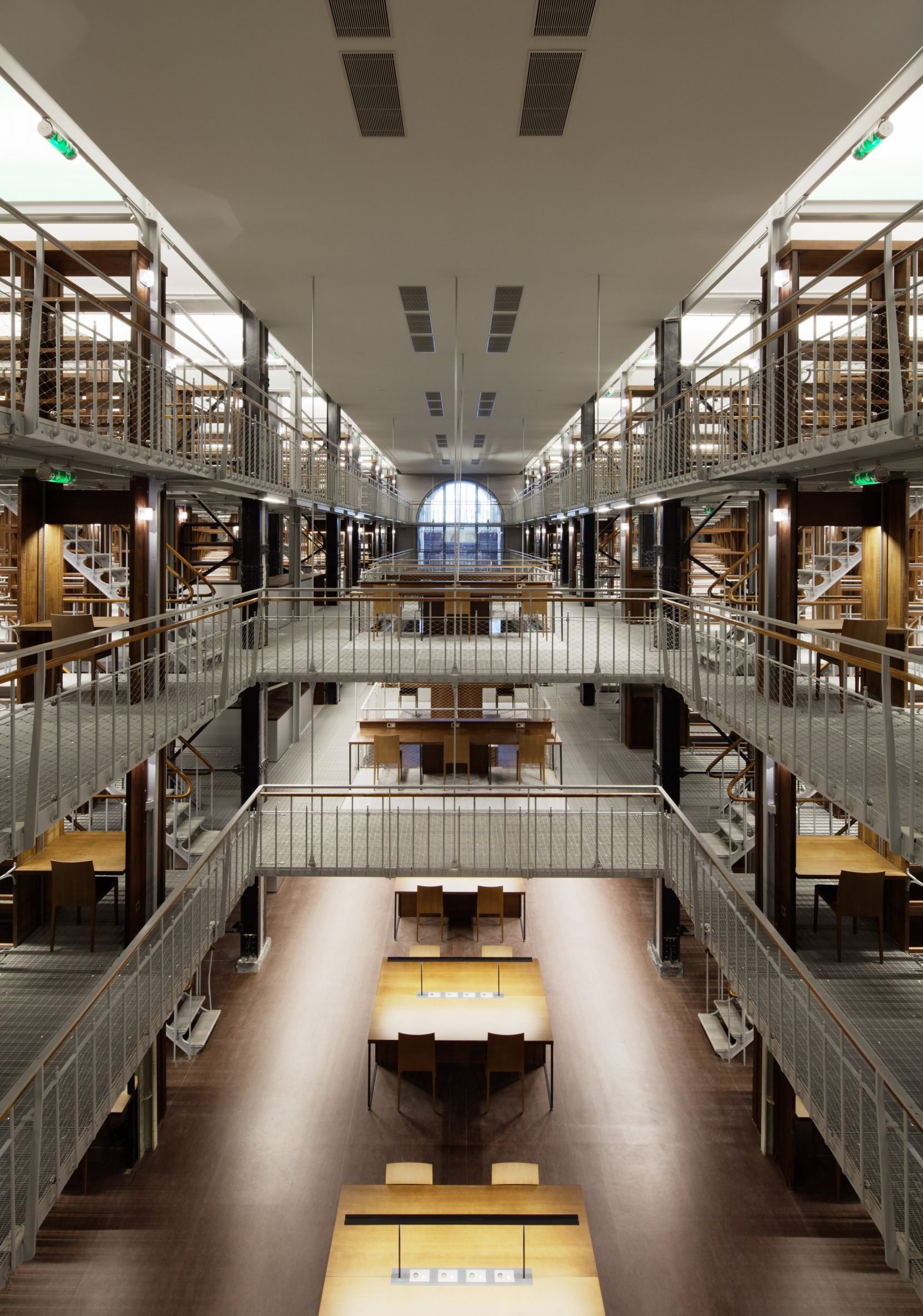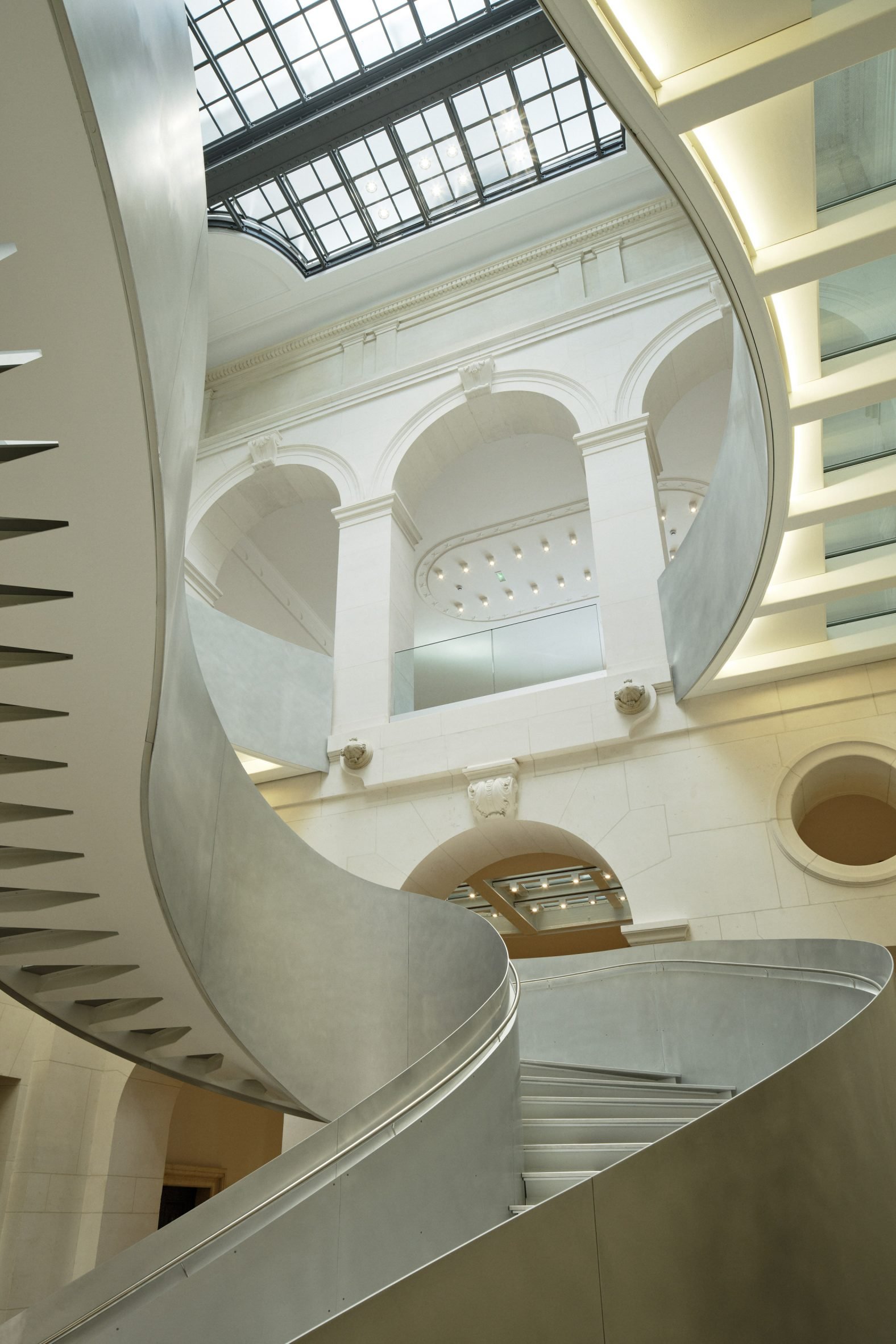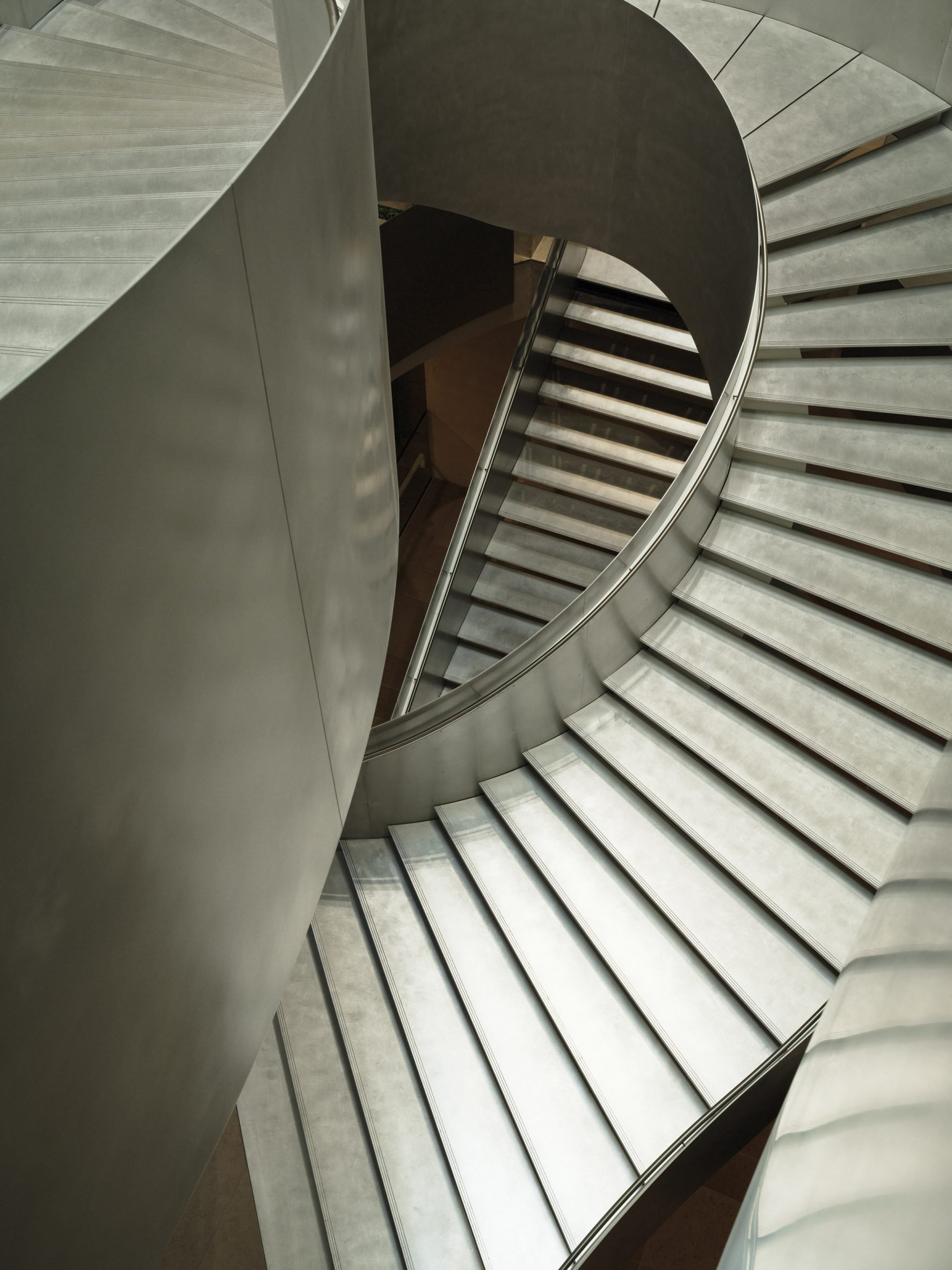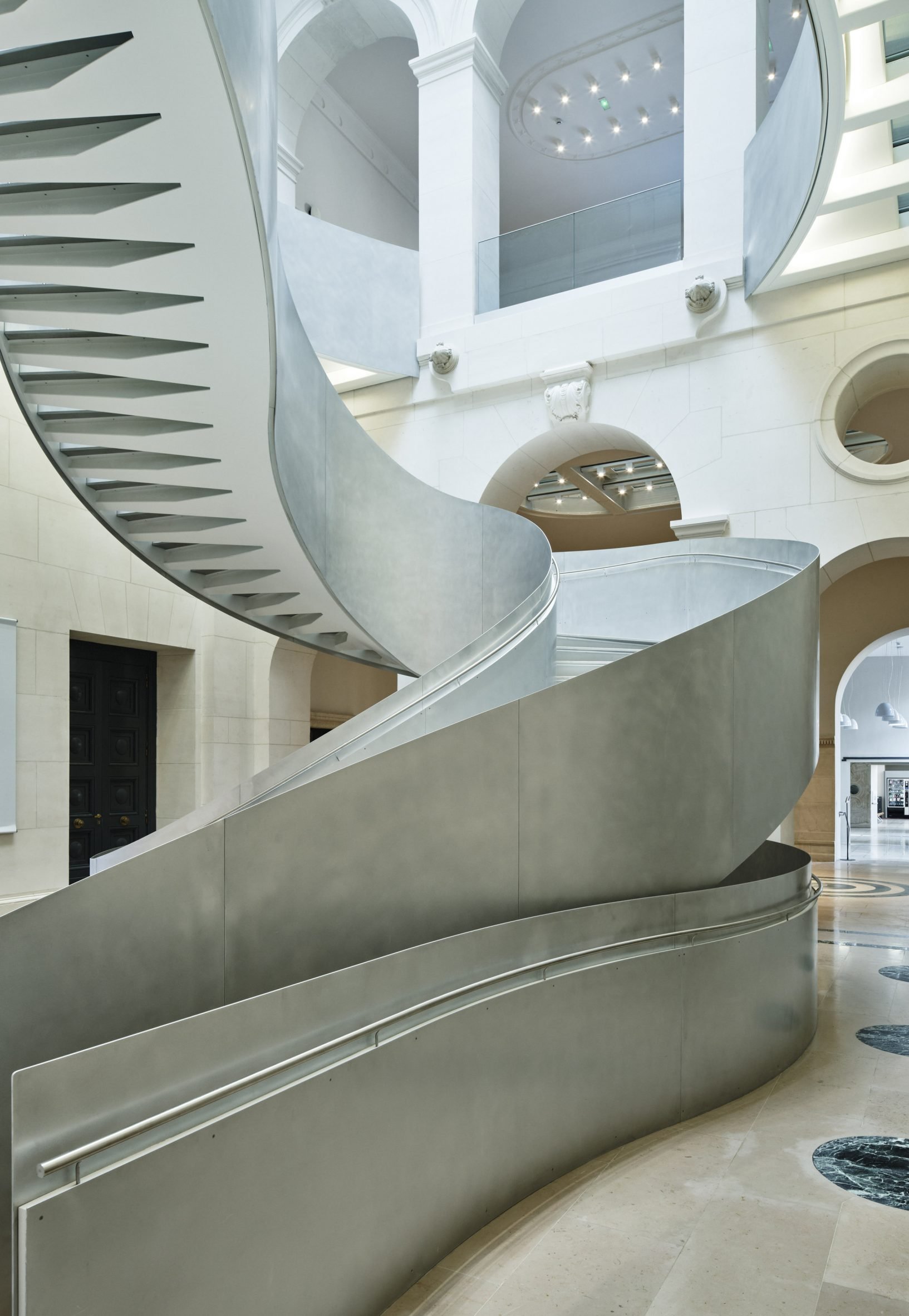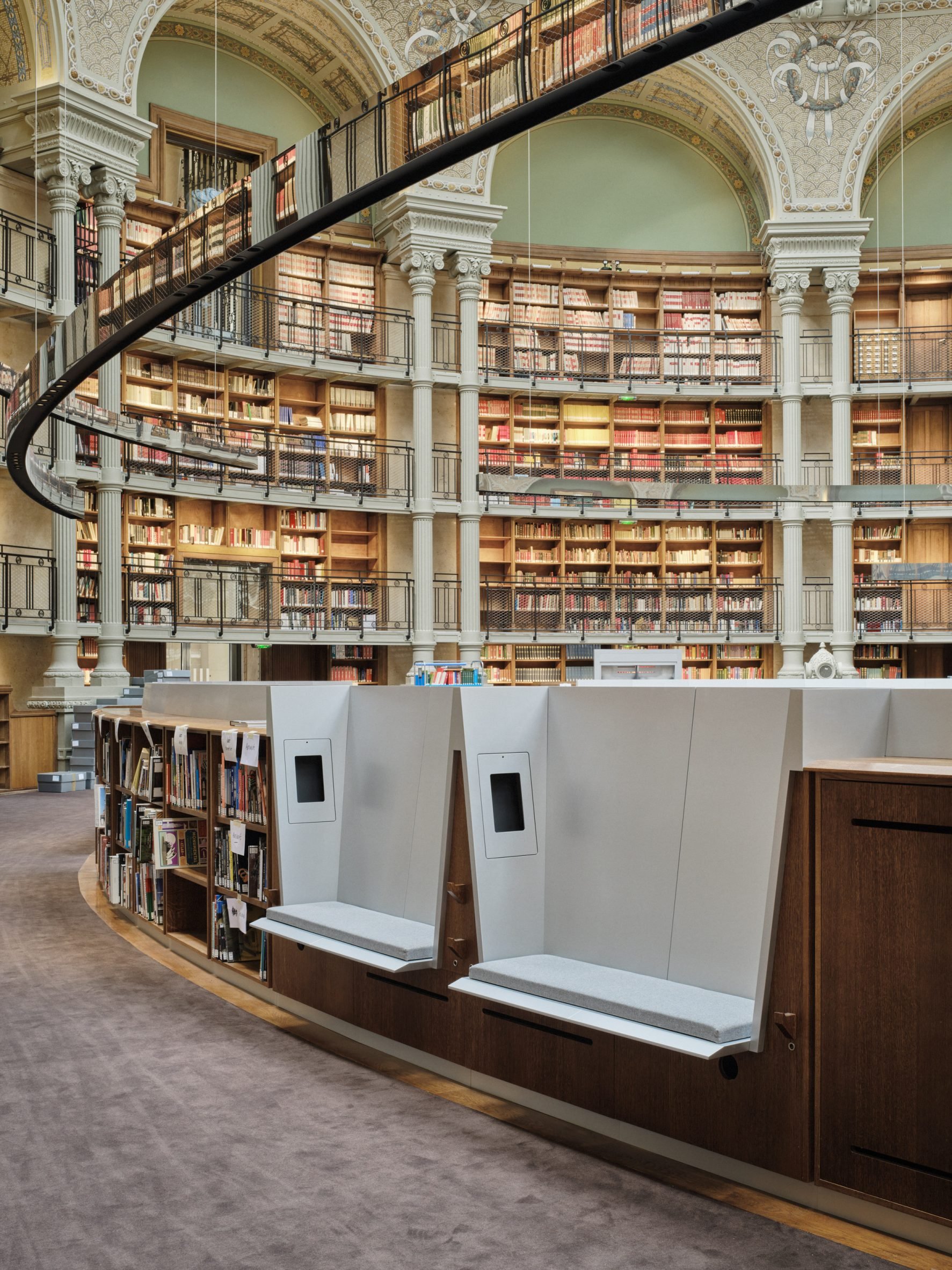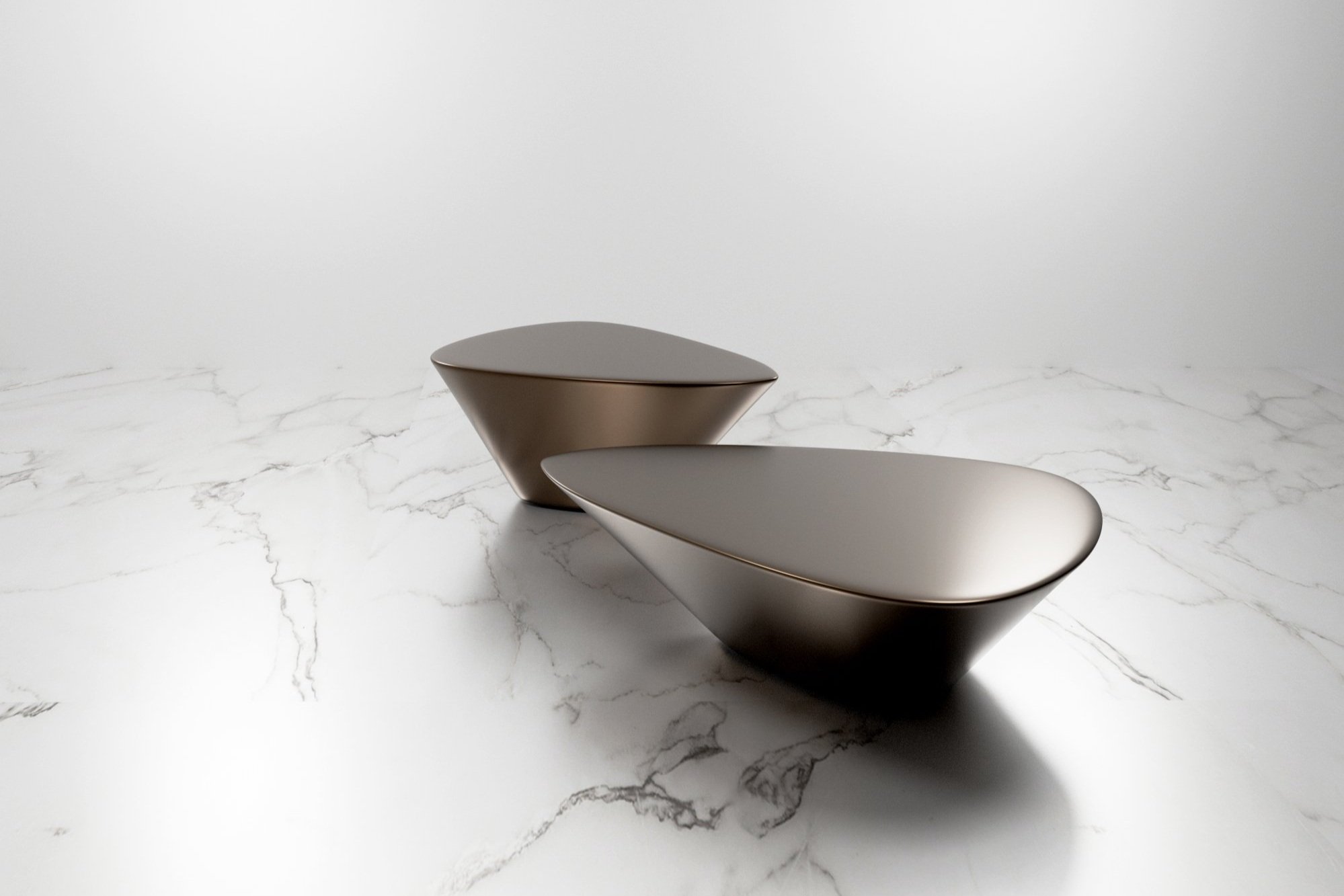A labor of love | the National Library of France
March 22, 2023
the National Library of France
A labor of love
The French are notoriously known for taking their time, but sometimes time is what it takes. Paris has seen the completion of a few long term-renovation projects in recent years. First, in 2021 with the opening of the Samaritaine, a former widely successful bazaar with the catching slogan “On trouve tout à la Samaritaine” (“One can find everything at Samaritaine”), in the years before falling out of fashion, then brought back to life by no other than LVMH. After 16 years of intensive restorations it finally opened to the excitement of the many Parisienes who had been following the project for almost 2 decades.
The following year in 2022, Paris saw its second mega-restoration project completed; the famous National Library of France. Built in the late 19th century in the style of the Beaux Arts, architect Henri Labrouste created large reading rooms flooded by natural light, and held up by highly decorated slender steel columns.
The architectural office of Bruno Gaudin was responsible for the overall management of the project, while the restoration of the listed and undoubtedly most famous "Salle Labrouste" was entrusted to Jean-François Lagneau, chief architect of Monuments Historiques. The main challenge was to restore the original vibrant colors of the space while ensuring that the details complied with modern building codes and regulations.
When restoring la Salle Labrouste, Lagneau concealed modern infrastructure to preserve the Labrouste's "shadowless light" - perfect for reading and filtered through polished glass eyes in the ceiling’s nine domes. Originally the room had no artificial lighting, so every aspect of the design was aimed at maximizing the available daylight, but after the evening hours were introduced in the 1920s, lights were added to the podium, which have been carefully restored.
In addition, Lagneau paid close attention to the role played by the white and cream palette of the tiled dome and the gilt decoration on the curved iron supports. The uniform cream-brown paint finish on the iron columns has been removed, and the brown carpet has been replaced with reflective hardwood flooring. The column capitals are now richly differentiated to suggest the variety of metals Labrouste brought together, while the canopies appear to be a combination of iron and aluminum, which was considered a precious metal at the time of construction.
As with older buildings that have undergone many renovations throughout history, some rooms become a patchwork of the many projects. In the National Library, the Central Library is one of these rooms. Originally built in 1868, two lower floors were added between 1936 and 1938, and five upper floors were added in 1959. Bruno Gaudin was the first to remove insensitive modifications that had been added over the decades, including elevators, paneling and drop ceilings. These removals provided an opportunity to uncover metal additions made in the 1930s and 50s, elements that were intricately woven into the original structure. A contemporary material palette of aluminum, steel and LED lighting is intended to highlight the reserve's history.
For your next weekend in Paris, why not sign up for a guided tour of the building? Timing is every Saturday at 5.30pm and the tour is in French, so it gives you the chance to dust off your language skills.
Photography by Takuji Shimmura, Olivier Ouadah, Jean-Christophe Ballot, and Jude Talbot
Original sources
dezeen,
ArchDaily,
designboom,
and
Architectural Record
If you enjoy our content, why not sign up below to our newsletter to receive updates about new content, campaigns, and product releases.


